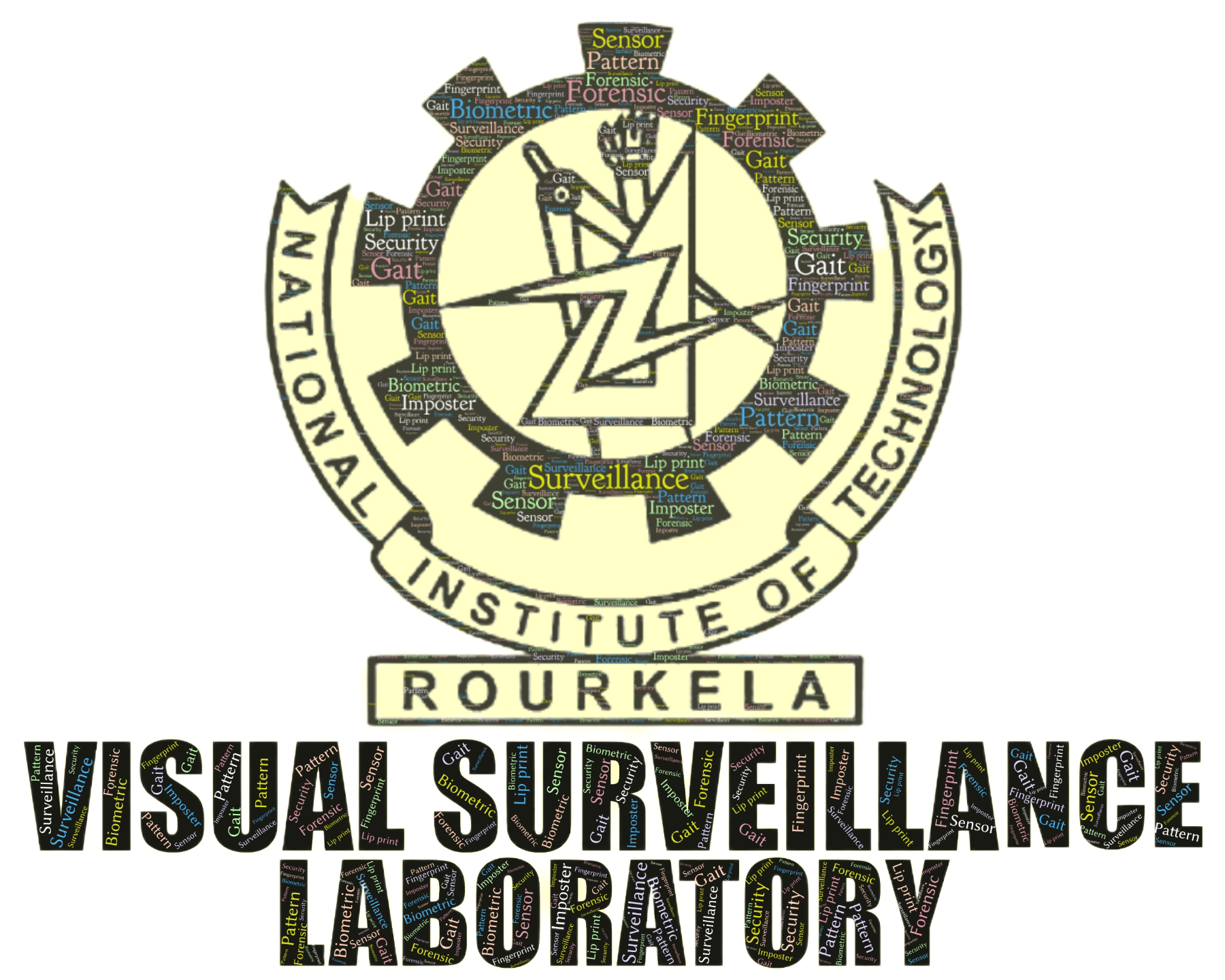
Sambit Bakshi
I am aSambit Bakshi Sambit Bakshi is currently an Associate Professor at the Department of Computer Science and Engineering, National Institute of Technology Rourkela, India. He also serves as Head of the Centre for Automation Technology at National Institute of Technology Rourkela. His area of interest includes surveillance, biometric security, digital forensics, and social security analytics. He presently serves as associate editor of multiple journals including IEEE Transactions on Circuits and Systems for Video Technology, IEEE Signal Processing Letters, IEEE Transactions on Consumer Electronics, IEEE Transactions on Automation Science and Engineering, Computers and Electrical Engineering, IEEE Transactions on Computational Social Systems, IEEE Transactions on Technology and Society, and IEEE Transactions on Education. He previously served as Associate Editor of IEEE Systems Journal, IEEE IT Professional magazine, IEEE Access, Innovations in Systems and Software Engineering Springer: A NASA Journal, Expert Systems with Applications, Engineering Applications of Artificial Intelligence, Image and Vision Computing, Multimedia Systems, Multimedia Tools and Applications, and Neural Processing Letters, Plos One, and Expert Systems in the past. He is a senior member of IEEE. He is Founding Chair of IEEE Rourkela Subsection and IEEE Kolkata Section Biometrics Council Chapter. He is a distinguished lecturer of IEEE Systems Council for 2023-2025 and distinguished lecturer of IEEE Women in Engineering for 2024-2025. He has published widely in more than 100 journals and conferences.
In the news
-
IEEE Transmitter shares my view on Explainable AI !, 2024. 
-
IEEE Transmitter shares my view on AR/VR for immersive retail !, 2022. 
-
Featured author on IEEE Xplore homepage, 2022. 
-
My interview on IEEE social media pages, IEEE , 2022. 
-
SMARTER WEARABLES - HEALTHIER LIFE, IEEE Transmitter, 2022. 
-
More Than Meets the Eye: Everything You Wanted to Know About Ocular Biometric Databases Now in the Public Domain (by Lori Cameron), IEEE Computer, 2018. 
-
An eye on identification - Rourkela NIT's student Sambit Bakshi receives prestigious award for iris research, The Telegraph, 2011. 
Editorial Services
Current Editorial Services
Past Editorial Services
Memberships and Activities
Publications
Teaching
CS222 / CS2008 Database Engineering
Standard Textbooks:
- Database System Concepts - A. Silberschatz, H.F. Korth, S. Sudarshan
- Fundamentals of Database Systems - R. Elmasri, S. Navathe, S.B. Navathe, R. Sunderraman
- An Introduction to Database Systems - C.J. Date
- Readings in Database Systems - J.M. Hellerstein and M. Stonebraker (The (Databases) Red Book)
Alternative/Supplementary Reading:
- Principles of Database Systems - J.D. Ullman
- An Introduction to Database System - B. Desai
- Database Management Systems - J.Gehrke and R.Ramakrishnan
- Database Systems: The Complete Book - H. Garcia-Molina, J.D. Ullman, J. Widom
- Transaction Processing: Concepts and Techniques - J. Gray and A. Reuter
- A First Course in Database Systems - J. Ullman and J. Widom
- Database Systems - C.E. Begg and T.M. Connolly
- Database Concepts - D.M. Kroenke and D.J. Auer
- Physical Database Design - S. Lightstone, T. Teorey, T. Nadeau
Course Outline:
CS302 / CS3001 Computer Graphics
Syllabus:
Introduction; Graphics Hardware; Display technologies; Basic raster graphics algorithms; Scan conversion; Filling rectangles, polygons, pattern filling; world coordinate systems 2D, 3D; 2D transformations; Projection; Representing curves and surfaces
Standard Textbooks:
- Computer Graphics, C Version - D. Hearn and M.P. Baker
- Computer Graphics: Principles and Practice - J.F. Hughes, A. van Dam, M. McGuire, D.F. Sklar, J.D. Foley, S.K. Feiner, K. Akeley
- Fundamentals of Computer Graphics - P. Shirley and S. Marschner
Alternative/Supplementary Reading:
- Computer Graphics using Open GL - Francis S. Hill
- Multimedia Systems - R. Steinmetz and K. Nahrstedt
- Fundamentals of Multimedia - Ze-Nian Li and M. S. Drew
- Mathematical Elements for Computer Graphics - D.F. Rogers and J.A. Adams
- Physically Based Rendering: From Theory to Implementation - M. Pharr and G. Humphreys
- Procedural Elements for Computer Graphics - D. Rogers
- Computer Graphics for Java Programmers - L. Ammeraal and K. Zhang
- Computer Graphics: A Survey of Current Techniques and Applications - J. Lewell
- Computer Graphics: Theory Into Practice - J.J. McConnell
- Computer Graphics: Techniques and Applications - R.D. Parslow, R.W. Prowse, R.E. Green
- Computer Graphics and Virtual Environments: From Realism to Real-time - M. Slater, A. Steed, Y. Chrysantho
- Interactive Environments with Open-Source Software - W. Hohl
- Foundations of 3D Computer Graphics - St.J. Gortler
- Interactive Computer Graphics, A Top-Down Approach with WebGL - E.d Angel and D. Schreiner
Lecture Topics:
CS402 / CS4001 Biometric Security
Course overview 
Syllabus:
Introduction (what is biometrics, types of biometrics, authentication modes, model of a biometric system and its modules, applications, challenges, biometric menagerie, Doddington’s zoo)
Performance Measurement and Evaluation Parameters (Choosing a threshold, False acceptance, false rejection, equal error rate, accuracy, CMC curve, ROC curve, Area under ROC curve, d' index)
About biometric databases (why needed, what types of scenarios provided, constrained and unconstrained databases)
Iris biometric system (demonstration of acquisition model, segmentation, Haar feature extraction, Nearest Neighbour Matching, Results)
Feature Extraction methodologies (Local and Global feature, Transformation, Wavelets, Energy features, Feature selection and dimension reduction)
Fingerprint biometric system (Overview, alignment and segmentation, core, delta, minutiae detection, matching and performance discussions)
Palmprint biometric system (segmentation of rectangular RoI, feature extraction and matching)
Ear biometric system
Face biometrics
Biometric standards
Attacks of biometric system
Privacy issues and legal aspects
Slides will be uploaded soon...
Standard Textbooks:
- Handbook of Fingerprint Recognition - D. Maltoni, D. Maio, A.K. Jain, S. Prabhakar
- Handbook of Biometrics - A.K. Jain, P. Flynn, A.A. Ross
- Handbook of Multibiometrics - A.A. Ross, K. Nandakumar, A.K. Jain
Alternative/Supplementary Reading:
- Biometric Systems: Technology, Design and Performance Evaluation - J. Wayman, A.K. Jain, D. Maltoni, D. Maio
- Biometrics: Identity Assurance in the Information Age - J.D. Woodward, N.M. Orlans, P.T. Higgins
- Introduction to Biometrics - A.K. Jain, A. Ross, K. Nandakumar
VS Laboratory

Motivated and passionate researchers or faculties willing to join the lab or to collaborate with the lab can contact me at sambitbaksi@gmail.com to initiate a discussion. We are eager to discuss all sorts of possibilities. So, just don't hesitate to contact us.
Visual Surveillance laboratory at NITR strives to push the boundaries of the spectrum of research in the field of surveillance, biometrics, and digital forensics aiming societal benefits. We are also open for internship positions, and we encourage willing candidates to write to sambitbaksi@gmail.com with a CV attaching to the application mail.
Our Research Includes
The details on activity recognition is yet to be added.
Opposed to token based (e.g. possession of smart card) or knowledge based (e.g. knowing a PIN/password), biometric systems authenticate a returning user based on his traits that are inherent to him/her. These traits can be physiological (cannot be altered easily as per user's choice, e.g. eye image), or behavioral (can be altered by an user's choice, e.g. signature). Biometric systems are expected to deal with reliable traits. However, usually the traits are subject to change with time, varying illumination, pose etc, making it challenging for the system to work properly. Therefore simple mathematical comparison of saved data and new data by the user is not functional, leading to the usage of pattern recognition techniques.
- Testing performance of different traits with different feature extraction and matching algorithms
- Developing tailor-made features for a particular trait
- Classification of subjects based on gender, ethnicity; kinship verification
- Indexing and organization of biometric data for fast matching
- Soft and cancellable biometrics
The details on visual forensic is yet to be added.
The details on UAV navigation and automatic signaling is yet to be uploaded.
A typical outdoor video surveillance system deploys a network of cameras to monitor a wide-area scene, e.g. airport, car parking zone, and shopping complex. For global monitoring, it is necessary that the network bears a semantic communication among the member cameras. Also, with advent of PTZ cameras, the movement of these cameras are utilized intelligently for effective surveillance.
- Calibration and topology selection for multi-camera network
- Covering maximal surveillance area with minimal cameras
- Developing algorithms to make cameras 'smart' by embedding functionalities like 'follow the pedestrian'
- Architecture, middleware, and applications of smart camera networks
Person re-identification can be modelled as a recognition/matching task, where a probe individual is matched against a gallery of templates (representing the individuals previously seen by the camera network). The person re-identification process can be seen as a combination of following sequential tasks: multi-person detection, feature extraction from appearances cues of the detected persons and storing them in a gallery, feature extraction and matching of the probe subject with the gallery. Adding to this, the challenges become multi-folded when external factors like camera resolution, intensity variation, occlusion, pose variation come into play.
- Engineering suitable visual features for re-identification
- Finding low-cost computational model for feature extraction and matching
- Developing algorithms to make cameras 'smart' by embedding functionalities like 'follow the pedestrian'
- Coping with external factors like intensity variation, clothing condition, pose variation etc.
The details about video summarization is about to be uploaded.
People
Faculties
Dr. Sambit Bakshi
Dr. Pankaj K. Sa
Dr. Manmath Narayan Sahoo
Current Doctoral Research Scholars

Debbrota Paul Chowdhury
Debbrota Paul Chowdhury is a doctoral scholar working in the field of computer vision. His research specifically focuses on ear biometric security, i.e. person identification using ear images using image processing and deep learning techniques. which involves person identification using ear images. By leveraging advanced image processing and deep learning techniques, he aims to develop robust methods for recognizing individuals based on the unique characteristics of their ears. His work is pivotal in enhancing security systems and ensuring accurate identification in various applications.
Contact: debbrota@gmail.com

Gautam Kumar
Gautam Kumar is a research scholar dedicated to the field of Biometric Security. His research focuses on the development of a surveillance system based on the periocular region, which includes the area around the eyes. Utilizing deep learning techniques, he aims to create systems that can effectively identify individuals even in challenging conditions, such as low light or partial occlusion. His work contributes significantly to improving the reliability and accuracy of biometric surveillance systems. Additionally, Gautam's research explores novel approaches to integrate periocular recognition with other biometric modalities to enhance multi-modal security frameworks. His efforts are crucial in advancing biometric security technologies and their applications in real-world scenarios.
Contact: mrgautam15@gmail.com

Tanmay Kumar Behera
Tanmay Kumar Behera is a doctoral scholar working in the field of Drone Vision. His research specifically focuses on Road Extraction from aerial imagery using machine learning and deep learning techniques. By developing sophisticated algorithms, he aims to enhance the accuracy and efficiency of road detection from drone-captured images, which can be applied to various fields such as urban planning, disaster management, and autonomous driving. His work is essential in advancing the use of drones for practical and beneficial applications.
Contact: tanmay.vssut@gmail.com

Nayan Behera
Nayan Kumar Subashis Behera is a doctoral scholar engaged in the field of Computer Vision, with a primary focus on visual surveillance and security. His research involves developing advanced deep learning techniques to enhance the capabilities of surveillance systems. By improving the accuracy of object detection and tracking, his work aims to create more reliable and effective security systems. His contributions are crucial in addressing the growing demand for intelligent surveillance solutions in various sectors. Furthermore, Nayan's work extends to exploring the ethical implications of surveillance technologies, ensuring that advancements in security are balanced with considerations for privacy and civil liberties. His comprehensive approach positions him as a key contributor to the development of next-generation surveillance systems.
Contact: subashis.29@gmail.com
Funding
VS Lab@NITRkl has actively participated in works collaboratively funded by the following agencies and have produced valuable research outputs:
- National Natural Science Foundation of China under Grant# 61300167 [Resulting article: Baliarsingh2019]
- National Natural Science Foundation of China under Grant# 61976120 [Resulting article: Baliarsingh2019]
- Natural Science Foundation of Jiangsu Province under Grant# BK20151274 [Resulting article: Baliarsingh2019]
- Natural Science Foundation of Jiangsu Province under Grant# Grant# BK20191445 [Resulting article: Baliarsingh2019]
- Six Talent Peaks Project of Jiangsu Province under Grant# XYDXXJS-048 [Resulting article: Baliarsingh2019]
- Jiangsu Provincial Government Scholarship Program under Grant# JS-2016-065 [Resulting article: Baliarsingh2019]
- National Council for Science and Technology (The Conacyt), Government of Mexico, Project# 155045 [Resulting article: Olague2019]
- Seventh Framework Programme of the European Union through the Marie Curie International Research Staff Scheme under Grant FP7-PEOPLE-2013-IRSES [Resulting article: Olague2019]
- Seventh Framework Programme of the European Union through the Marie Curie International Research Staff Scheme under Grant 612689 ACoBSEC [Resulting article: Olague2019]
- National Science and Technology Foundation (FCT) / Ministry of Science, Technology and Higher Education (MCTES), European Union funds under the Project# UID/EEA/50008/2020 [Resulting article:MishraInPress]
- Brazilian National Council for Scientific and Technological Development (CNPq) Grant# 309335/2017-5. [Resulting article:MishraInPress]
- Qatar National Research Fund through National Priority Research Program (NPRP) # NPRP 8-140-2-065 [Resulting article: Rida2020]
- Qatar National Research Fund through National Priority Research Program (NPRP) # 6-249-1-053 [Resulting article]
- National Research Foundation of Korea grant by the The Ministry of Science, ICT and Future Planning (MSIP), Government of South Korea, Grant# 2016R1A2B4011712. [Resulting article]
- National Science and Technology Foundation (FCT) / Ministry of Science, Technology and Higher Education (MCTES), European Union funds under the Project# UID/EEA/50008/2013
- Horizon 2020 IDENTITY project (H2020-EU.1.3.3), European Commission, European Union, Grant# 690907
- COST action CA16101 and the COSMOS PRIN project of the Italian Ministry of Research
If any individual or any enterprise is willing to fund our laboratory through donating seed money / books / computers / equipment / furniture, we heartily welcome them. A discussion can be initiated by mailing me to sambitbaksi@gmail.com with subject "Willingness to fund VS Lab @ NIT Rourkela".
If you like our research, you can cheer up the researchers just by sending a surprise pizza :) :)
Collaborators
|

|
Some of the Collaborators are:
| Zahid Akhtar | University of Quebec | Canada |
| Somaya Al-maadeed | Qatar University | Qatar |
| Sung Wook Baik | Sejong University | Korea |
| Andrea Bruno | University of Salerno | Italy |
| Xiaojun Chang | Monash University | Australia |
| Arif Mahmood | Information Technology University | Pakistan |
| Khan Muhammad | Sejong University | Korea |
| Hugo Proenca | University of Beira Interior | Portugal |
| Imad Rida | University of Toulouse | France |
| Yulei Wu | University of Exeter | United Kingdom |
| Feng Xia | Dalian University of Technology | China |
| Amine Nait-Ali | Université Paris-Est Créteil (UPEC) | France |








